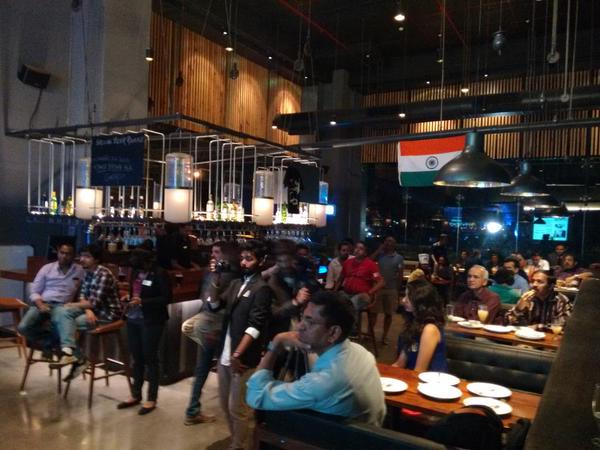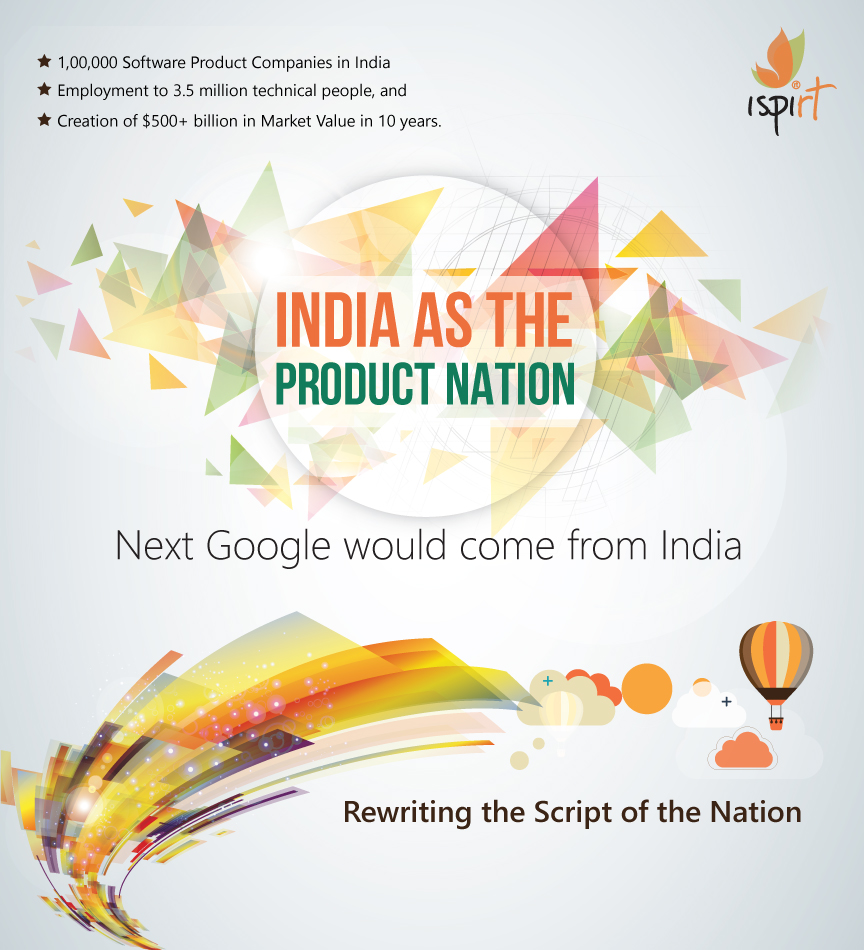Digital banking has caught the fancy of every bank in the world, from small to large. Digital, which assumes internet connectivity, allows customers to avail of banking services anytime, anywhere from their digital devices. Digital devices include laptops, tablets, mobile phones, ATM, Kiosks and may be even large touchscreens. Every time a customer or a prospect is interacting with a digital device and learning more about a bank or transacting with a bank, the bank is providing an experience (even if the bank knows it or not). Whether that experience is making it easy for the customer to remember, come back, start a process, complete a process, ask for support, recommend to a friend etc. is what defines the essence of digital experience.
In other words, digital banking experience is a series of interactions a customer has on his/her digital device. Most of us would pay attention to the “series of interactions” and forget about the “customer” part. We need to look at the experience from a customer’s perspective. What’s missing in most of the digital banking experiences is the emotional aspect. We don’t need to run a Yash Raj Films musical score in the background while banking. But, are we able to empathize with our customers in a way that we can capture their intent logically and emotionally and solve it so that they can be both successful and happy after the interaction?
Why is this important? There is a huge realization that if banks don’t get their digital banking strategy and execution right, their customers might leave them for another bank that does get it right. Banks have realized that digital is a fundamental new challenge for them. It is also a huge opportunity to re-imagine customer experience. So, what does a digital banking user want or expect the bank to provide? There are many things, but we need to remember, everyone in this world has a relationship with money. And they need help to manage that relationship so as to maximize their wealth. Digital makes that possible like never before.
But, are banks ready? It all depends on how well we know our users. So, here are top 10 things a digital banking user expects based on my observations. Some of the examples and jargons used like NEFT are familiar in the Indian context. But, the principles remain the same for any global bank.
#1 Digital user has a goal to accomplish. Digital banking is pretty convenient in terms of time and effort. It beats driving to the bank and standing in line any day (nothing personal). To provide the best customer experience online, we need to know why is the user visiting the web site or mobile app? Do they want to transact, as in check balance or transfer funds or do they want to shop for loans and fixed deposits? It’s very easy to find out depending on what they choose to click (or touch). Unfortunately, there is a lot of information thrown at the user. This causes cognitive overload and the unintended effect is that the user will learn how to ignore everything except a sequence of clicks built into muscle memory to get their jobs done. So, are we helping the user get their jobs done or are we throwing hurdles along the way? Next time you login, count the number of horizontal scrolls, vertical scrolls, flashing news, ads, popups and extra pages you see on the way to checking your balance! To get this right, we need to provide relevant information based on customer intelligence. For this to happen, we need to begin with really understanding the users.
This requires deep capabilities in product management and a product mindset.
Yes, the hidden question is, so how do we market our billion other products now that we have the attention of the customer? Agreed, the website is a great channel to market new products, but we need to first focus on making the customer successful in their intended jobs.
#2 Digital user expects anytime, anywhere, anywho service. This is a very basic expectation from internet services. The beauty of digital bank is that it’s always there with the customer wherever they go and whatever the time or day of the week is. So, for example, instead of saying NEFT option of funds transfer is not possible now (after entering all the details) since its beyond office hours, how about providing the user with a workable set of options based on the time of login, from the moment they choose to transfer funds?
It was funny to find out that NEFT (before RTGS came along) couldn’t batch my requests to transfer funds beyond office hours. I recently found out NEFT and RTGS are platforms that are government owned and operated. Commercial core banking system vendors can only do with what is possible. So, the interesting bit was the online fund transfers are timed for clearance at the same time as the manual cheques! Internet runs 24×7. Think Flipkart or Google.
There are times when the user wants to communicate with the bank via their preferred option of email, facebook or twitter. It is not important who they communicate with or when but that their problem gets solved. For this to happen, banks should put in place mechanisms to create an integrated session across multiple channels of communication. Banks should also stop viewing emails, facebook or twitter as silos and have an integrated strategy in communication.
This requires deep technology platforms and robust customer data.
#3 Digital user expects banks to simplify the security process and yet keep it 100% secure. Two factor authentication is becoming the world standard for secure logins. More and more banks are deploying this measure for greater security. It is no doubt commendable that banks take our money deposited with them seriously and put strong security measures around them. Still, there are too many passwords to remember. I bet most senior citizens are writing down the passwords somewhere and reading from it. Hence, banks need to consider biometrics based logins urgently for mobile apps. Not sure if Aadhaar can verify biometrics but that’s a start for leverage.
However, there are some pretty confounding security measures followed by some banks. For example, a few banks don’t allow you to copy and paste (Ctrl-V is disabled) credit card or account numbers. In some cases, the account numbers are treated like passwords and masked. But there is another field right below that asks you to confirm the account number, which is not masked. Even OTPs are masked. I am not sure what’s the rationale behind this but isn’t it better if data doesn’t get transduced for integrity? May be someone can enlighten me behind the security use cases that demand masking every input. It will be great if banks develop a sense of graded risk tolerance. Once the user is authenticated and authorized there can be a scale down in terms of masking inputs or asking more passwords. Knowing user location can also help in grading risk tolerance. For example if the user is checking in from home it is much safer than from anywhere else outside.
A few banks want to educate the customers. Unfortunately, users have neither the time nor the inclination to read user manuals or attend workshops or watch videos just to figure out how to login! This is true for any digital service not just for banks. An eclectic mix of design and security can keep the vaults unbroken forever.
To build this capability you need to innovate rapidly or invest in a promising startup.
#4 Digital user expects that you don’t make them think. This is taking words from the title of a book by Steve Krug on how the best user experience designs don’t make the users think. This is true for even first time users. The questions in user’s minds are intuitively answered through thoughtfully designed interfaces. Getting to this point is an iterative process but this needs to be understood before growing the customer base. A very simple example is the design of choosing payees in some online banks. You are asked to remember the beneficiary id (numeric). It’s scary enough to remember your wedding anniversary. Who remembers beneficiary ids? Seriously! It’s incredibly over-engineered! I have figured out some short cuts – like for example, you can click on Search without giving any inputs and it will show you all the current payees.
Another example is interchanging the location of Change and Confirm buttons in subsequent pages in the same process flow. These are all actually hygiene factors in good design. It gets even more critical when you design mobile apps with limited real estate and shorter attention span.
Another example is NEFT, RTGS, IMPS are great technology platforms but for an average banking customer, they sound like jargons. How about showing a default (recommended option) along with other available options at the time of transaction with clear charges?
To build this capability you need a strong design organization. Banks may consider hiring a Chief Designer too!
#5 Digital user expects omnipresence. Omnipresence means being available and usable across all digital points of interaction. This is applicable for marketing channels across digital devices. A Facebook user may be looking for home loans for his/her new apartment. How can banks identify, participate in this conversation and help him/her make a decision? Are you there when the customer is looking for you? Think about rural users with feature phones. The second scenario is when the user is already a customer and needs to interact over their preferred choice of digital device. For e.g. how many users are using Windows Phone? Users would very much appreciate a consistent user experience in terms of layout, style, fonts, colors, design etc across all digital points of interaction. The third scenario is customer support when the user has a grievance and there are no easily available redressal mechanisms, the user has the power to vent on twitter letting the whole world know what a shameful service he/she is getting.
Having a presence is one thing and being effective is another thing. For example, it sounds like some banks that have twitter presence have given out a Standard Operating Procedure to their twitter reps of entrusting the responsibility of solving the customer’s problem back to the customer itself by asking them to navigate through their organizational maze. Wouldn’t it be great if these twitter issues and sentiments are also tracked and ticketed? All the bank needs to do is to link the twitter handle to the account and your twitter rep can solve the problem!
To build this omnipresence capability requires not only an integrated technology platform that bridges all silos but also an organization that is empathetic and aligned towards customers.
#6 Digital user expects “You must know me by now”. You would think that simple things like choosing “No Thanks” to downloading mobile app should be recorded but they keep showing up every single time you login! Going from fixing this to recommending the most relevant product based on my age, profession, income, savings, loans, where I live, my spend history, family information and a dozen other parameters; would be an ideal trajectory. Banks need to focus on conversions than clicks. Few and most relevant messages would be more meaningful than throwing a dozen messages and hoping for the best.
To build this capability, consider Predictive analytics and a robust customer database platform.
#7 Digital user expects that you are rethinking the WHOLE process and not just mirroring offline processes. Digitization of business processes presents a tremendous opportunity for improving efficiency. This should not be lost by simply taking the existing process with a mix of manual and semi-automated process and offering the same experience online. Digitization needs to be thought through in disruptive ways and this is certainly in the realm of several technology platforms available today. Digital needs an end-to-end perspective. For example, a few banks expect paper letters to initiate or re-initiate logins and request certain documents. It sounds like this is to ensure the person requesting is the same who owns the account but that should be obvious with a few security checks online.
To build this capability, we simply need better empathy of users that can be woven into product features and design! There may be a need to make core banking systems more open in terms of API support, but I will leave it to the experts.
#8 Digital user expects speed… and they get it! The speed of online banking is one thing that banks do get right. Speed is something that a digital user has been pampered with thanks to Google, JustDial or even online display ads served within 200 milliseconds from inMobi and the likes. Here speed should be viewed not just in terms of online site or mobile app responsiveness which is pretty good, but broadened to include overall online process duration. For example, time taken to approve a loan online or open a bank account online.
This highly engineering scalable capability is already or mostly built!
#9 Digital needs to augment hybrid experiences. Customers, retail or merchant, may need to visit a branch for various reasons. The frequency and the need may have already reduced and may further reduce. But, I think branches are not going away anytime soon. When the user visits a branch, is it possible to predict their questions given their historical pattern or an open case? How wonderful if this information was ready at the fingertips of the bank staff to satisfy the customer’s questions immediately. For example, every year around tax time, I need to make 2 visits to the branch to get a tax document. The first visit, I need to submit a written letter asking for the information and then come back the next working day. This needs to get online immediately but until then assuming regulatory procedures can this be solved in one visit? You can use the rest of the time in understanding your customer’s upcoming growth plans or life events and thereby using this opportunity to share more information about your other services (up-sell/cross-sell). This is probably the best outcome you can get out of face time!
To build this capability, bank staff needs to be equipped with customer intelligence management tools.
#10 Digital user expects you to be there for him/her. Just like personal relationship banking, digital doesn’t take away the need for the user to know a human on the other side. Adding a human relationship element in the world of bits and bytes is going to be a key differentiating factor in a bank’s success. The scope and quality of the conversation needs to be reconsidered once the basic transactional experiences are taken care of.
To build this capability, you just need good leadership!
In summary, be bold to put customer success first. WhatsApp founders were bold to say no to ads and the result is a super clean interface that is simple and powerful. In the words of Steve Jobs, Simplify, simplify, simplify and hide the complexity behind this simplification. It is not the customer’s job to understand how we work. It is our (as in the creator/service provider’s) job to understand what customers need and deliver value. To re-imagine a superior customer experience we need a holistic approach that spans business, products, design technology, analytics, marketing, support and most importantly new skill sets for the people who run and represent your banks.
What do you think?
To know more how you can go about building these capabilities and to improve customer experiences, email hello@pravisolutions.com.
The author is the founder of Pravi Solutions, an Innovation and Marketing Consultancy enriching digital experiences!


 customers, samples of new designs by textile owners to or be it the owner in Amritsar who sells religious items to his customers in foreign. A shop keeper who sells cosmetics to the local college students used it to share the new goods/purses that were sold in his showroom.
customers, samples of new designs by textile owners to or be it the owner in Amritsar who sells religious items to his customers in foreign. A shop keeper who sells cosmetics to the local college students used it to share the new goods/purses that were sold in his showroom.

 We believe this
We believe this 

